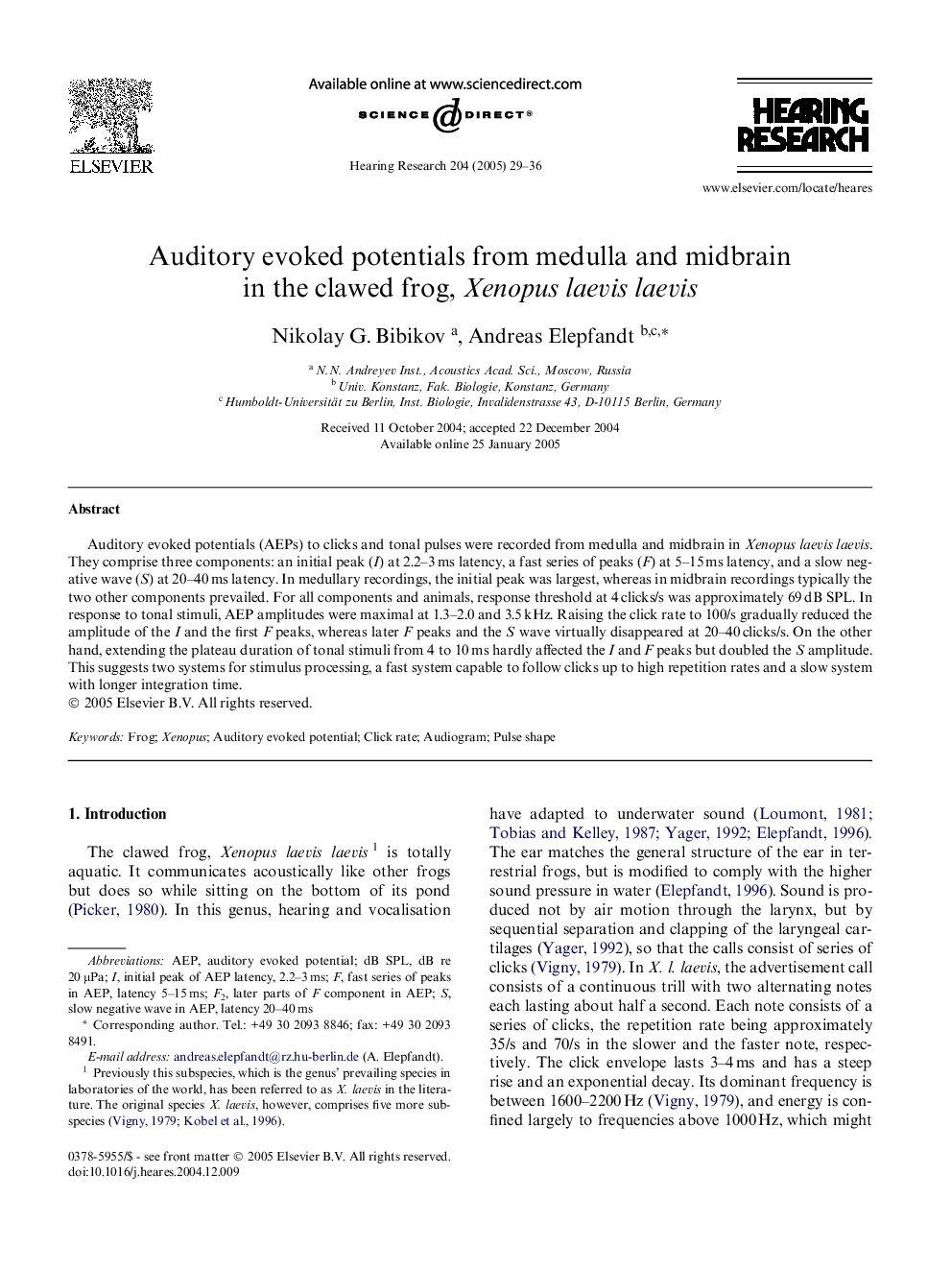| Article ID | Journal | Published Year | Pages | File Type |
|---|---|---|---|---|
| 9436522 | Hearing Research | 2005 | 8 Pages |
Abstract
Auditory evoked potentials (AEPs) to clicks and tonal pulses were recorded from medulla and midbrain in Xenopus laevis laevis. They comprise three components: an initial peak (I) at 2.2-3Â ms latency, a fast series of peaks (F) at 5-15Â ms latency, and a slow negative wave (S) at 20-40Â ms latency. In medullary recordings, the initial peak was largest, whereas in midbrain recordings typically the two other components prevailed. For all components and animals, response threshold at 4Â clicks/s was approximately 69Â dB SPL. In response to tonal stimuli, AEP amplitudes were maximal at 1.3-2.0 and 3.5Â kHz. Raising the click rate to 100/s gradually reduced the amplitude of the I and the first F peaks, whereas later F peaks and the S wave virtually disappeared at 20-40Â clicks/s. On the other hand, extending the plateau duration of tonal stimuli from 4 to 10Â ms hardly affected the I and F peaks but doubled the S amplitude. This suggests two systems for stimulus processing, a fast system capable to follow clicks up to high repetition rates and a slow system with longer integration time.
Related Topics
Life Sciences
Neuroscience
Sensory Systems
Authors
Nikolay G. Bibikov, Andreas Elepfandt,
